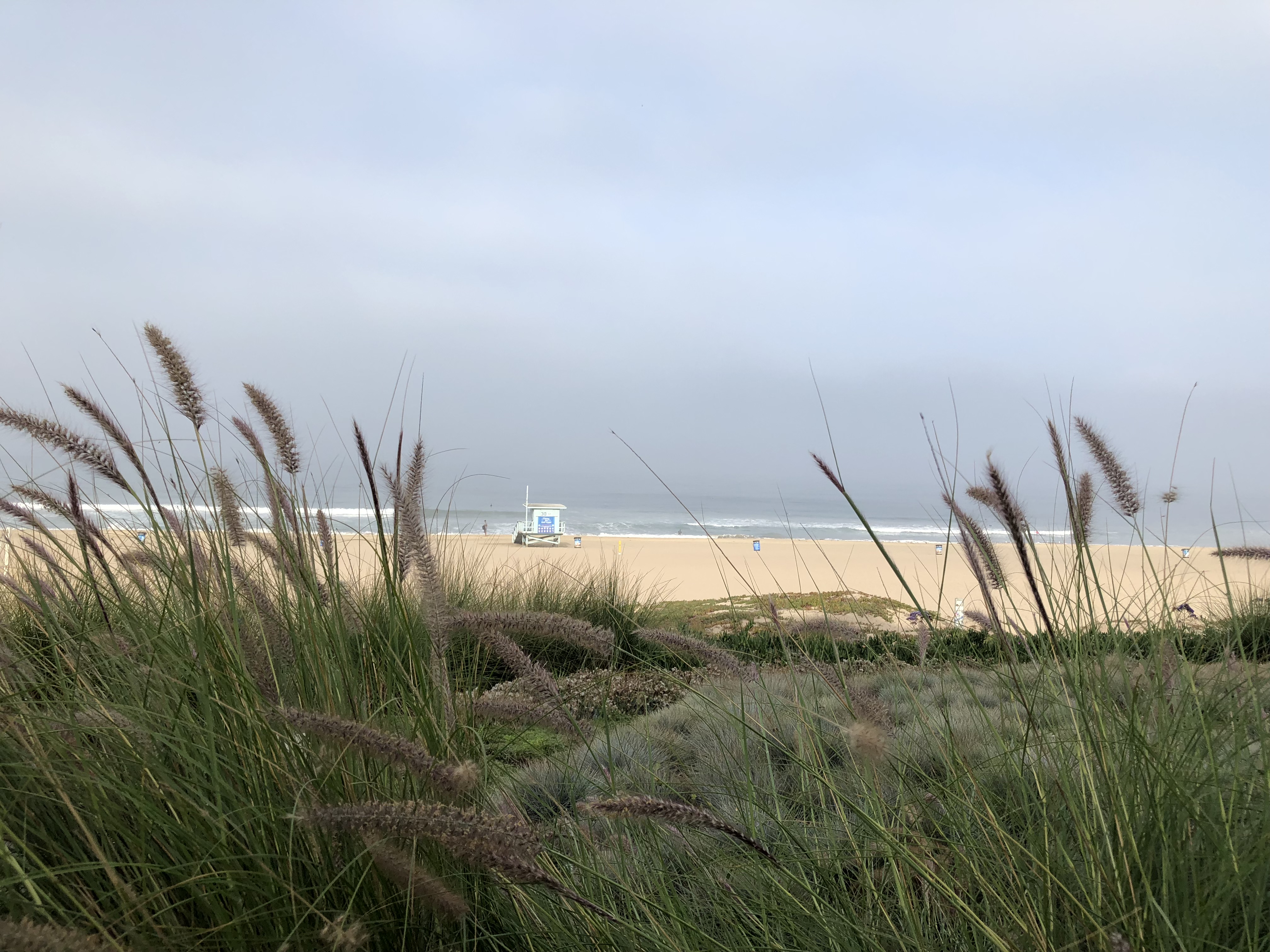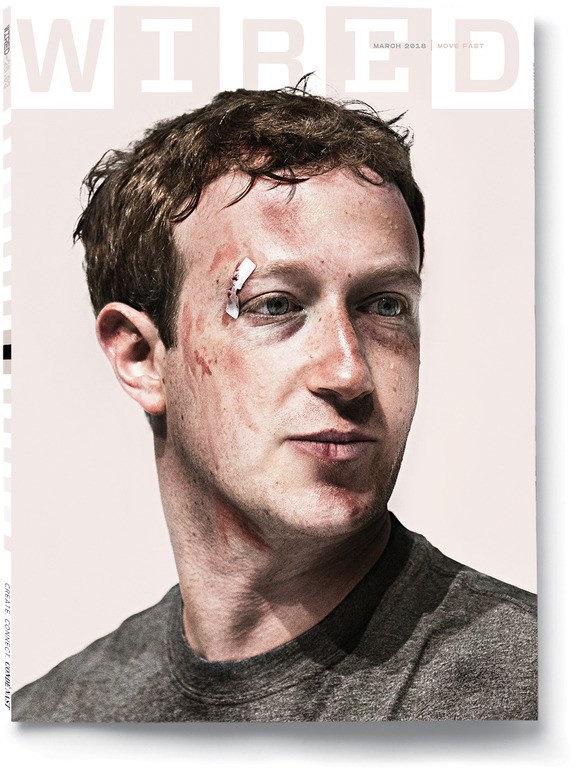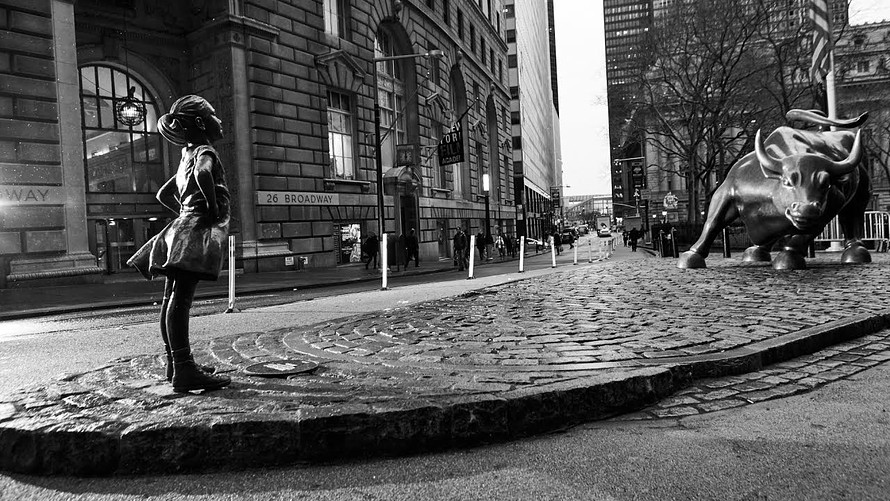While you were away, the U.S. commemorated the 50th anniversary of the moon landing and the effort to rebuild Notre Dame began in Paris. In New York, members of the Business Roundtable considered a new definition of the purpose of a corporation and Ava Duvernay continued to challenge conventional wisdom. It was a summer of cathedral thinking, blue oceans and questioning expertise.
These are the stories of folks who went to work every day, extending the definition of work and workplace beyond traditional boundaries to solve problems and create a vision of the future.
Here’s a sampling of articles from the Summer of 2019:
‘Why the Moon Landing Matters’ David Lidsky, Fast Company – June 1, 2019

“In this moment when government is viewed by so many Americans as being unable to dream as big as it did in the 1960s, whether the dream is traveling the solar system or forestalling the calamitous effects of climate change, understanding how NASA got us to the Moon the first time is both important and inspirational. The Apollo Moon landings were an extraordinary undertaking, but they were the work of ordinary people back on Earth. We need exactly that kind of effort to tackle some of the problems we face today, from economic inequality to climate change. The Moon can show us the way.“
‘Two Magical Places That Sent Apollo 11 to the Moon and Back’ Kenneth Chang, The New York Times – July 13, 2019
“The two key pieces that were the astronauts’ home during their lunar trips were built on opposite sides of the country.
The Apollo capsules rolled off the assembly line in Downey, Calif., a small city 15 miles southeast of downtown Los Angeles. Fifty years ago, NASA owned a 160-acre swath of Downey — the size of two Disneylands — that was home to factories, offices and test facilities.The story was almost the same in Bethpage, N.Y., on Long Island. That was the headquarters of Grumman Aircraft, which won the contract to build the spindly spacecraft that took Neil Armstrong and Buzz Aldrin to the surface of the moon.“
In April, Notre Dame Cathedral in Paris came close to being destroyed by fire. This summer The New York Times created an interactive site to document the event and the story of those who saved the cathedral.
‘Notre Dame came far closer to collapsing than people knew. This is how it was saved.’ Elian Peltier, James Glanz, Mika Grondahl, Weiyi Cai, Adam Nossiter, and Liz Alderman. July 18, 2019

“That Notre-Dame still stands is due solely to the enormous risks taken by firefighters in those third and fourth hours.
Disadvantaged by their late start, firefighters would rush up the 300 steps to the burning attic and then be forced to retreat. Finally, a small group of firefighters was sent directly into the flames, as a last, desperate effort to save the cathedral.
“There was a feeling that there was something bigger than life at stake,” said Ariel Weil, the mayor of the city’s Fourth Arrondissement, home to the cathedral, “and that Notre-Dame could be lost.”
On August 19, the Business Roundtable issued a new statement on the purpose of the corporation.

“While each of our individual companies serves its own corporate purpose, we share a fundamental commitment to all of our stakeholders. We commit to:
– Delivering value to our customers. We will further the tradition of American companies leading the way in meeting or exceeding customer expectations.
– Investing in our employees. This starts with compensating them fairly and providing important benefits. It also includes supporting them through training and education that help develop new skills for a rapidly changing world. We foster diversity and inclusion, dignity and respect.
– Dealing fairly and ethically with our suppliers. We are dedicated to serving as good partners to the other companies, large and small, that help us meet our missions.
– Supporting the communities in which we work. We respect the people in our communities and protect the environment by embracing sustainable practices across our businesses.
– Generating long-term value for shareholders, who provide the capital that allows companies to invest, grow and innovate. We are committed to transparency and effective engagement with shareholders.“
We learn from the wisdom of others and this summer, writer, producer and director Ava DuVernay leads on innovation.
‘How Ava DuVernay Is Finding Blue Oceans in Hollywood’ Nilofer Merchant, Harvard Business Review – August 7, 2019

“Conventional thinking in red oceans is why blue oceans go undiscovered.
New markets are found when someone stands in a spot that gives them a point of view distinctly their own.
DuVernay has shown us what the work of discovering blue oceans looks like: It is claiming that spot in the world where only you stand, even if that means leaving rooms where you’re being dismissed and marginalized. It is gathering your crew, those who share your commitment and purpose and will work to create new truths. It is finding the communities that can share your vision and scale it. These are unconventional ways to lead. Leaving. Social. Sharing. They seem counterintuitive and even wrong to those who lead red oceans. But they are how growth and progress and innovation happen. It’s what explorers do to chart new territory.”
The last article from the summer continues the conversation on expertise and how we are all being asked to ‘do more with less.”
‘At Work, Expertise is Falling Out of Favor’ Jerry Useem, The Atlantic – July, 2019
“By 2020, a 2016 World Economic Forum report predicted, “more than one-third of the desired core skill sets of most occupations” will not have been seen as crucial to the job when the report was published. If that’s the case, I asked John Sullivan, a prominent Silicon Valley talent adviser, why should anyone take the time to master anything at all? “You shouldn’t!” he replied.
As a rule of thumb, statements out of Silicon Valley should be deflated by half to control for hyperbole. Still, the ramifications of Sullivan’s comment unfurl quickly. Minimal manning—and the evolution of the economy more generally—requires a different kind of worker, with not only different acquired skills but different inherent abilities. It has implications for the nature and utility of a college education, for the path of careers, for inequality and employability—even for the generational divide. And that’s to say nothing of its potential impact on product quality and worker safety, or on the nature of the satisfactions one might derive from work. Or, for that matter, on the relevance of the question What do you want to be when you grow up?“
Summing up the summer recap: ordinary people are capable of extraordinary things. You just need to find your unique scenic view of the world, an employer who values your contribution, and an ability to adapt.
Photo credits: Moon Landing – NASA, Notre Dame worker – Patrick Zachmann for Magnum Arts


 We spend our days trying to figure out new ways to extend our lives, maintain our looks and yet we seem to have ignored the reality that our work life might also extend beyond traditional retirement age.
We spend our days trying to figure out new ways to extend our lives, maintain our looks and yet we seem to have ignored the reality that our work life might also extend beyond traditional retirement age. Unfortunately, we’re not doing a very good job of coping with current organization dynamics. Human resource professionals rarely have a seat at the strategic planning table. Each of these challenges involve people.
Unfortunately, we’re not doing a very good job of coping with current organization dynamics. Human resource professionals rarely have a seat at the strategic planning table. Each of these challenges involve people. Take a minute to view the video segment from
Take a minute to view the video segment from 
 “The announcement from the medical school’s trustees, leaders, and faculty was delivered this morning to first-year medical students and family members as a surprise ending to the annual White Coat Ceremony, where each new student is presented with a white lab coat to mark the start of their medical education and training.
“The announcement from the medical school’s trustees, leaders, and faculty was delivered this morning to first-year medical students and family members as a surprise ending to the annual White Coat Ceremony, where each new student is presented with a white lab coat to mark the start of their medical education and training.





 Journalist
Journalist 
 “Both these men were about energy—positive, negative, generative—and while they racked up stunning achievements separately, they were elevated when joined. Put them together in collaboration—in masterpieces such as the joyous ballet Fancy Free, the breakaway musical On the Town, and the electrifying experiment
“Both these men were about energy—positive, negative, generative—and while they racked up stunning achievements separately, they were elevated when joined. Put them together in collaboration—in masterpieces such as the joyous ballet Fancy Free, the breakaway musical On the Town, and the electrifying experiment 


 “Mr. Young joined NASA in the early years of manned spaceflight and was still flying, at age 53, in the era of space shuttles. He was the only astronaut to fly in the Gemini, Apollo and shuttle programs. He was also chief of NASA’s astronauts office for 13 years and a leading executive at the Johnson Space Center in Houston.
“Mr. Young joined NASA in the early years of manned spaceflight and was still flying, at age 53, in the era of space shuttles. He was the only astronaut to fly in the Gemini, Apollo and shuttle programs. He was also chief of NASA’s astronauts office for 13 years and a leading executive at the Johnson Space Center in Houston. The repercussions go far beyond the wages and hours of individuals. In America, more than any other developed country, jobs are the basis for a whole suite of social guarantees meant to ensure a stable life. Workplace protections like the minimum wage and overtime, as well as key benefits like health insurance and pensions, are built on the basic assumption of a full-time job with an employer. As that relationship crumbles, millions of hardworking Americans find themselves ejected from that implicit pact. For many employees, their new status as “independent contractor” gives them no guarantee of earning the minimum wage or health insurance.”
The repercussions go far beyond the wages and hours of individuals. In America, more than any other developed country, jobs are the basis for a whole suite of social guarantees meant to ensure a stable life. Workplace protections like the minimum wage and overtime, as well as key benefits like health insurance and pensions, are built on the basic assumption of a full-time job with an employer. As that relationship crumbles, millions of hardworking Americans find themselves ejected from that implicit pact. For many employees, their new status as “independent contractor” gives them no guarantee of earning the minimum wage or health insurance.”
 Women@work
Women@work At the time many were skeptical. The Los Angeles Times reported: “New protest era may be emerging, but sustaining unity could prove difficult.”
At the time many were skeptical. The Los Angeles Times reported: “New protest era may be emerging, but sustaining unity could prove difficult.” On October 5 the first major
On October 5 the first major  The questioning of expertise
The questioning of expertise The gig/side-hustle career
The gig/side-hustle career Up lit: A new genre emerges in publishing
Up lit: A new genre emerges in publishing It begins: “When people ask me what I do – taxi drivers, hairdressers – I tell them I work in an office. In almost nine years, no one’s ever asked what kind of office, or what sort of job I do there. I can’t decide whether that’s because I fit perfectly with their idea of what an office worker looks like, or whether people hear the phrase work ‘in an office’ and automatically fill in the blanks themselves – lady doing photocopying, man tapping at a keyboard. I’m not complaining, I’m delighted that I don’t have to get into the fascinating intricacies of accounts receivable with them.”
It begins: “When people ask me what I do – taxi drivers, hairdressers – I tell them I work in an office. In almost nine years, no one’s ever asked what kind of office, or what sort of job I do there. I can’t decide whether that’s because I fit perfectly with their idea of what an office worker looks like, or whether people hear the phrase work ‘in an office’ and automatically fill in the blanks themselves – lady doing photocopying, man tapping at a keyboard. I’m not complaining, I’m delighted that I don’t have to get into the fascinating intricacies of accounts receivable with them.”













